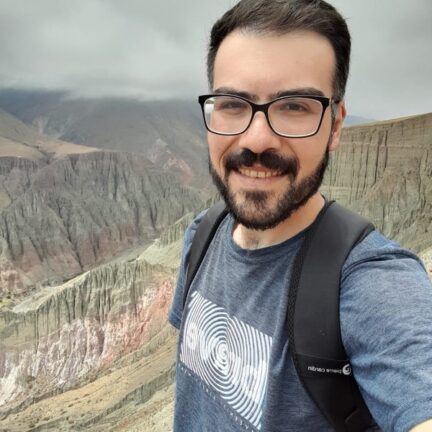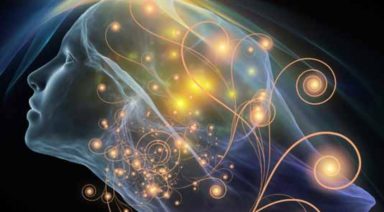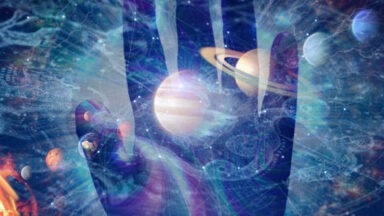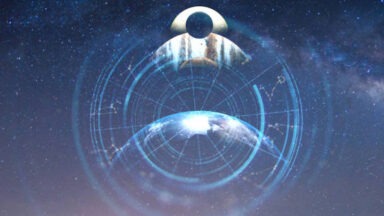The 7 Hermetic Principles of the Kybalion Explained

Hermetic philosophy, based on the teachings attributed to Hermes Trismegistus, has influenced numerous systems of thought throughout history. In the book “The Kybalion,” seven principles are presented that summarize this ancient wisdom. These principles, ranging from universal mentality to the law of causality, provide a guide to understanding and navigating the universe. In this article, we explore each of these principles in detail, unraveling their meaning and practical application.
Table of Contents
- The Kybalion and the Hermetic Principles
- The 7 Hermetic Laws
- The Principle of Mentalism: The Universal Mind
- The Principle of Correspondence: The Law of Analogy
- The Principle of Vibration: Constant Motion
- The Principle of Polarity: Duality and Opposites
- The Principle of Rhythm: Cycles and Tides
- The Principle of Cause and Effect: The Law of Causality
- The Principle of Gender: Masculine and Feminine Energies
- Hermetic Laws and Quantum Physics
- Hermes Trismegistus and Hermetic Philosophy
The Kybalion and the Hermetic Principles
“The Kybalion” is a text that compiles the Hermetic teachings into seven fundamental principles, offering a comprehensible and accessible vision of this ancient philosophy. First published in 1908, its authors, known as the Three Initiates, aimed to reveal these esoteric concepts to the Western public. Through its pages, the book explores the relationship between the universe, the mind, and the laws that govern existence.
The Hermetic principles of the Kybalion encompass various areas of human and cosmic experience, providing a coherent structure for understanding how the world works. This holistic approach allows readers to apply these principles to their daily lives, fostering a deeper understanding of reality and facilitating spiritual and personal growth.
The 7 Hermetic Laws
The seven Hermetic principles are the pillars of the philosophy of the Kybalion: mentalism, correspondence, vibration, polarity, rhythm, cause and effect, and gender. Each of these principles offers a unique perspective on the nature of the universe and human experience, providing tools for self-understanding and spiritual growth.
The Principle of Mentalism: The Universal Mind
“The All is Mind; the Universe is Mental.”
The principle of mentalism holds that reality is a creation of the universal mind. Everything that exists is a manifestation of the infinite mind, and our thoughts are fundamental in shaping our life experience. This concept implies that consciousness is the source of everything we perceive and experience, suggesting that the universe is essentially mental in nature.
This principle also reminds us of personal responsibility in the creation of our experiences. By understanding that our thoughts act as creative forces in the universe, we are encouraged to cultivate positive and constructive thinking. In this way, we can consciously influence our reality, promoting not only our personal well-being but also collective well-being by recognizing the interconnectedness of all minds in the universe.
The Principle of Correspondence: The Law of Analogy
“As above, so below; as below, so above.”
The principle of correspondence establishes that there is a direct relationship between the different planes of existence: the physical, the mental, and the spiritual. The patterns and laws that operate in the macrocosm are reflected in the microcosm, allowing us to better understand the universe by studying its manifestations on various levels. This connection helps us recognize that universal laws apply both on a grand scale and in our daily lives.
This principle invites us to see harmony in all things, from atoms to galaxies, and to recognize how our internal actions and thoughts reflect and affect the external world. By understanding this relationship, we can live in a more balanced way and in tune with the universe. This understanding promotes both personal and collective well-being, as it allows us to adjust our perceptions and behaviors to create a more coherent and harmonious reality.
The Principle of Vibration: Constant Motion
“Nothing rests; everything moves; everything vibrates.”
The principle of vibration holds that everything in the universe is in constant motion and change. From the smallest particles to the largest galaxies, everything vibrates at different frequencies. This understanding reveals to us that absolute stability is an illusion and that change is a universal constant, allowing us to better adapt to shifts and flow with life.
Every object, thought, and emotion has its own vibrational frequency, meaning that our personal vibrations can influence our reality. By maintaining a high and positive frequency, we can attract more harmonious and fulfilling experiences, creating a balanced and healthy life. This principle teaches us to be aware of the energies we emit and receive, fostering a more conscious and aligned existence.
The Principle of Polarity: Duality and Opposites
“Everything is dual; everything has poles; everything has its pair of opposites; like and unlike are the same; opposites are identical in nature but different in degree; extremes meet; all truths are but half-truths; all paradoxes may be reconciled.”
The principle of polarity states that everything has its pair of opposites and that these opposites are, in reality, two extremes of the same thing. This concept helps us understand that duality is essential for balance and that contrasts exist to complement and enrich each other.
This principle provides tools for personal transformation by shifting our perception of opposing poles. By recognizing that extremes are part of the same continuum, we can transcend internal and external conflicts, balance our emotions, and view paradoxes from a broader and more reconciling perspective.
The Principle of Rhythm: Cycles and Tides
“Everything flows, out and in; everything has its tides; all things rise and fall; the pendulum-swing manifests in everything; the measure of the swing to the right is the measure of the swing to the left; rhythm compensates.”
The principle of rhythm states that everything in the universe moves in cycles and phases, like the tides of the ocean. This axiom teaches us that life is a series of ebbs and flows and that constant change is a natural part of the process. Recognizing these rhythms allows us to understand that phases of expansion and contraction are inevitable and necessary for growth.
This understanding helps us better navigate life’s ups and downs, providing comfort and patience during moments of adversity. By accepting and aligning ourselves with natural cycles, we can maintain a healthy balance and optimize our energy, living in harmony with the rhythms of the universe.
The Principle of Cause and Effect: The Law of Causality
“Every cause has its effect; every effect has its cause; everything happens according to law; chance is but a name for law not recognized; there are many planes of causation, but nothing escapes the law.”
The principle of cause and effect states that every action has a corresponding consequence and that nothing happens by chance. This axiom teaches us that everything that occurs results from previous causes and that our current actions will determine our future. Understanding this law empowers us to make conscious and responsible decisions.
This awareness motivates us to act ethically and thoughtfully, knowing that our actions affect not only ourselves but also others. By exploring the different planes of causality, we can align our intentions and thoughts with our goals, creating a positive flow of energy in our lives.
The Principle of Gender: Masculine and Feminine Energies
“Gender is in everything; everything has its masculine and feminine principles; gender manifests on all planes.”
The principle of gender holds that all things contain two fundamental energies: the masculine and the feminine. These energies do not refer exclusively to physical sex but to complementary qualities present in all forms of life and at all levels of reality. The masculine energy is associated with action and logic, while the feminine is related to receptivity and intuition.
This principle invites us to seek balance between these two energies in our daily lives. By cultivating both masculine and feminine energy, we can develop greater internal and external harmony, making more complete and effective decisions. This balance allows us to live more integrally and in tune with the universe.
Hermetic Laws and Quantum Physics
Hermetic laws and quantum physics share striking similarities in their understanding of reality. Both perspectives hold that consciousness plays a fundamental role in the formation of the universe. In quantum physics, the wave-particle duality principle and the observer effect suggest that the mind can influence matter, resonating with the principle of mentalism, which states that the universe is mental.
The principle of vibration, which maintains that everything is in constant motion, is reflected in quantum physics through concepts such as quantum fluctuations and ever-moving subatomic particles. These connections suggest that, at a fundamental level, everything in the universe is interconnected and in a state of constant change, which also aligns with the Hermetic idea of correspondence and the rhythmic cycles of the principle of rhythm.
In the first season of Mystery Teachings, available on Gaia, Theresa Bullard explores these intersections between quantum physics and Hermetic wisdom. Bullard explains how the Hermetic principles can offer a deeper understanding of quantum phenomena, providing a spiritual framework for the complexities of modern physics.

Hermes Trismegistus and Hermetic Philosophy
Hermes Trismegistus, a legendary figure who combines the Egyptian god Thoth and the Greek god Hermes, is the pillar of Hermetic philosophy. Known as “the thrice-great” for his mastery of alchemy, astrology, and magic, he is credited with fundamental texts such as the Corpus Hermeticum and the Emerald Tablet. These works offer a profound understanding of the universe and its laws, establishing a foundation for the Hermetic tradition that has influenced various esoteric and philosophical currents throughout history.
Hermetic philosophy, derived from the teachings of Hermes Trismegistus, seeks to understand the connection between the universe and humanity. This tradition has influenced various esoteric and philosophical movements, highlighting the interrelation between the divine and the human. His writings provide a deep and unified vision of the cosmos, promoting self-knowledge and spiritual evolution.
Hermes Trismegistus is also known for his focus on spiritual transmutation, a process that goes beyond physical alchemy to include the purification and elevation of the soul. This perspective has resonated through the centuries, influencing alchemists and philosophers who see inner transformation as a key to true wisdom.
The influence of Hermes Trismegistus extends from antiquity to the Renaissance, when his texts were rediscovered and studied by prominent figures in science and philosophy. His thought has permeated multiple disciplines, offering a foundation for spiritual exploration and personal development across various cultures.
Today, Hermetic philosophy remains relevant, guiding those who seek a deeper understanding of the universe and themselves. The work of Hermes Trismegistus continues to inspire scholars and esoteric practitioners, providing a rich source of wisdom and a coherent structure for spiritual growth.
March Equinox: Conversation between the I and AM by Matías De Stefano

ME: So, the March Equinox is the first portal of the year.
I AM: No.
ME: What do you mean no?
I AM: As always, we ask ourselves again: from whose perspective?
ME: Oh, sure…
I AM: We consider the March Equinox a strategic point to begin, according to the Northern Hemisphere, since spring begins on this specific day, while for the Southern Hemisphere it’s autumn. And spring is a good time to begin, since plants begin to sprout again, which means the time for sowing is near.
ME: Ah, that’s why the horoscope also starts on this day. Aries.
I AM: The moment of beginning, the baby who begins to grow, the goat that in ancient times was given as an offering to the Earth, returning wealth, winter nourishment to Mother Earth, so that she may give us life again. A Middle Eastern tradition that went from the field to the sky.
ME: So if everything is a cycle of constant transformation, it’s impossible to say when the beginning is.
I AM: Remember that the Year is an idea generated by cultures to record that a complete revolution around the sun has already been completed. But a revolution can be counted from any instant; that is, every second can be considered a new year. However, the seasonal points of movement or equinoxes of movement (Solstices and Equinoxes) are key to determining the ends and beginnings of something. Therefore, we have four moments in the year that can be considered a beginning and an end.
ME: Why do we use December 31st as the end of the year? And not some other date.
I AM: Because the December Solstice, around the 21st, represents the darkest day of the year, the longest night, and then, over the next three days, the return to longer days begins. Wouldn’t you consider this fundamental to a grand ending and a grand beginning?
ME: Totally.
SOY: The problem is that this also happens in June, but in the southern hemisphere.
ME: So that new year, below the equator, would begin on June 21st.
I AM: Exactly.
ME: And why isn’t it celebrated?
I AM: Because the only traditions that lived this reality were native peoples with culture, traditions, spiritual and artistic wealth, but without civilizations with expansive organizations. The Ona, Mapuche, Selknam, Anangu, Koori, Maori, Zulu, Xhosa, to mention just 5% of the southern inhabitants, and so many others, all of them were easily dominated by European traditions. The only important civilization in the southern world was the Quechua-Aymara empire, the famous Incas, who opened the doors to the conquerors. Thus, all traditions of time, of the way of understanding the world and its movement, came to be solely in the hands of the vision of the Semitic cultures of the Middle East. However, for other traditions, the important moments are not the solstices, but the equinoxes. In ancient Persia, for example, or Hindu and Indonesian traditions, they use the beginning of spring as the beginning of the year. However, other traditions celebrate it at different times. In turn, some are not even based on the cycle of the Solar Cross, but on the moons, like the Chinese calendar.
ME: And why are we going to start the task with the March Equinox and not with others?
I AM: Simply because it is the first portal moment after the Portal day of February 22nd, the moment of the Network activation, which exactly 2 years ago activated this planetary task that began 4 years ago in the same month, on February 2nd. The anniversary of the Network reconnection mission is the month of February, and therefore, for us, the planetary reconnection tasks will generally begin in March.
ME: Ah, I understand.
I AM: In Atlantean times, this day was called Hol-Phyr, which means Time, Cycle, or Stage of Fire. This was the name given to the period between the March equinox and the June solstice, as it was the time when we reconnected with our inner power, the divine spark that ignites our potential. The seed is synonymous with the spark, and therefore, fire was found in that tiny aspect that provided food, which gave us strength, life, and energy.
ME: Is that the intention of these following months?
I AM: This is the intention that we will all put together in this Cycle of Fire.
ME: How?
I AM: Let’s remember the mission and how to prepare for it, before stepping on the first of the 5 Nodes that we will activate on March 20th.
This article was published on Matías De Stefano’s blog, where he shares his reflections and teachings on planetary transformation processes and spiritual consciousness.
We now share the special meditation to accompany this March Equinox portal. This meditation is conducted in both Spanish and English simultaneously. We invite you to take a few minutes to connect with this experience and deepen into its energy.
In the series The Journey of Remembering, available on Gaia, Matías De Stefano shares his personal and spiritual journey since childhood, revealing memories of past lives and the deeper purpose of his mission on Earth. Through each episode, he guides the viewer on a journey of connection with the soul’s history, the planet’s energetic movements, and the awakening of collective consciousness.





































